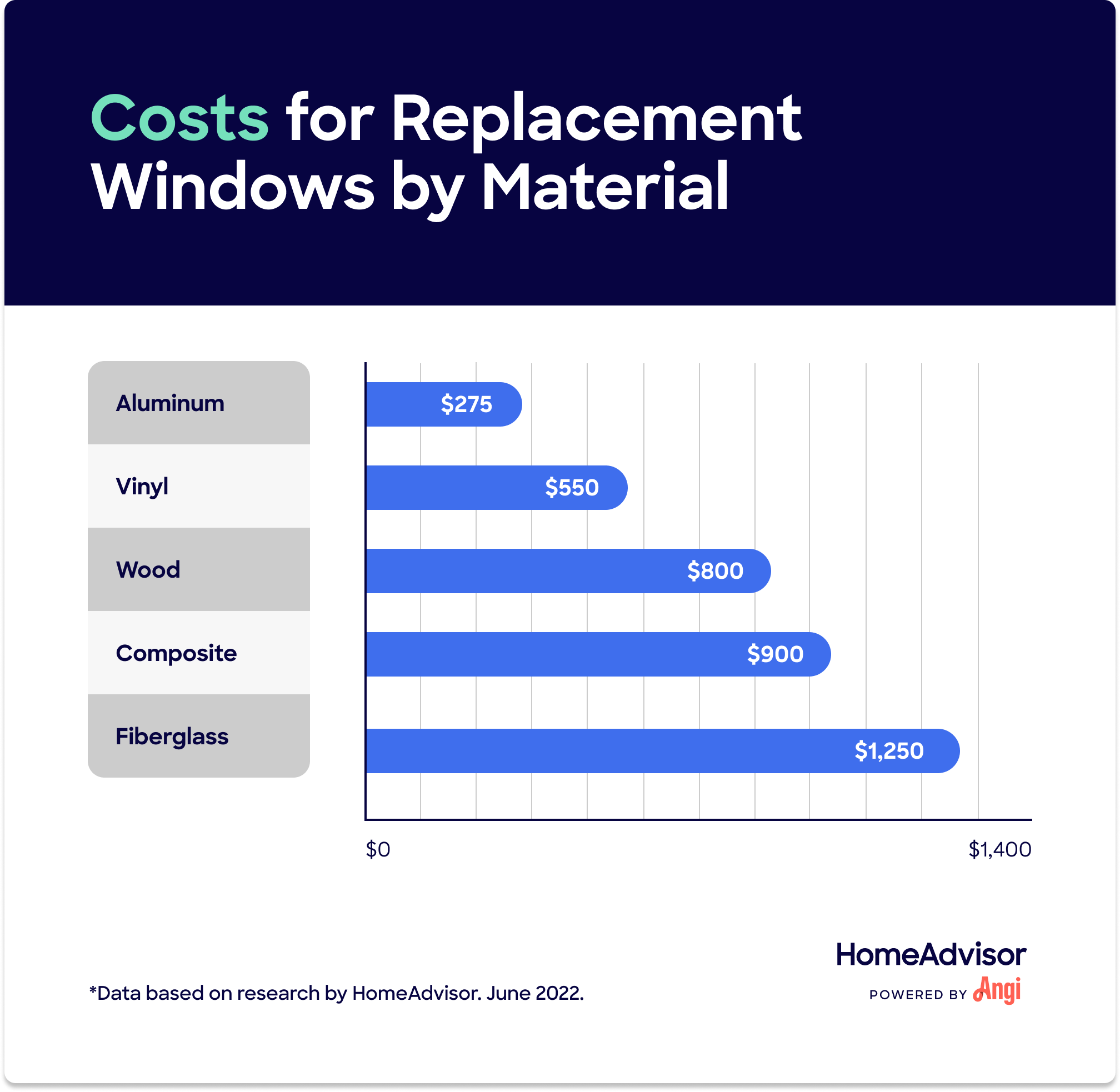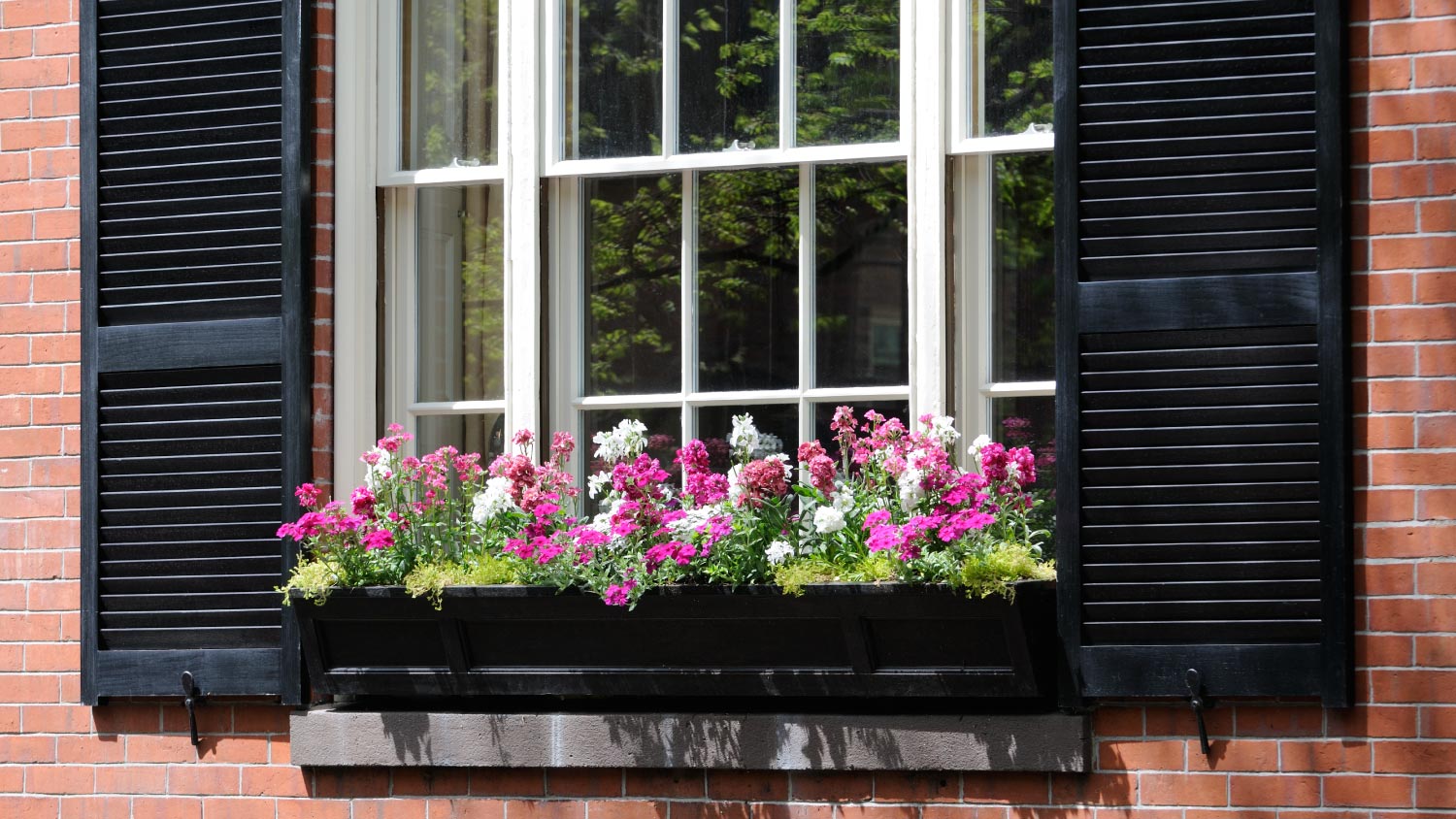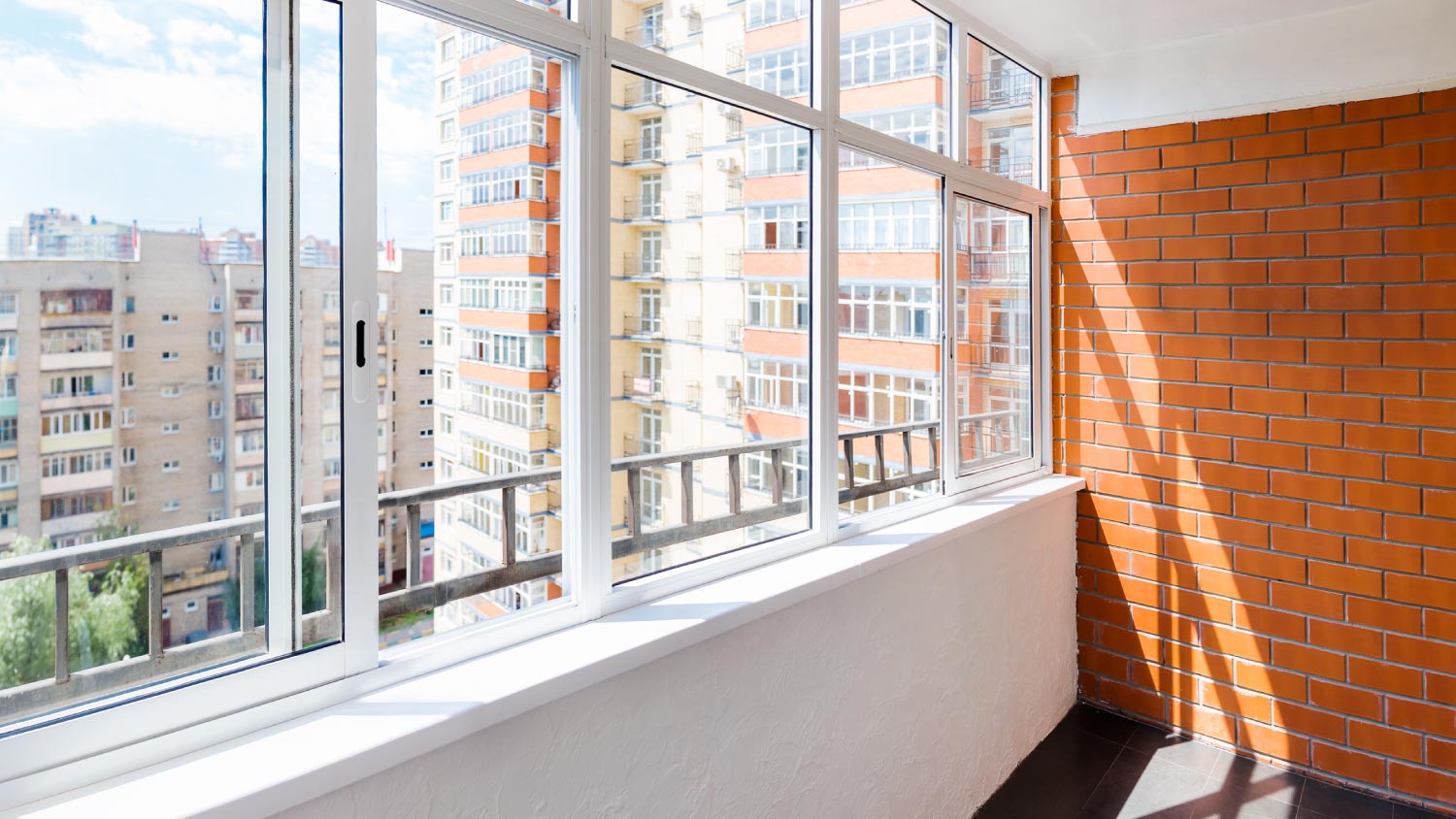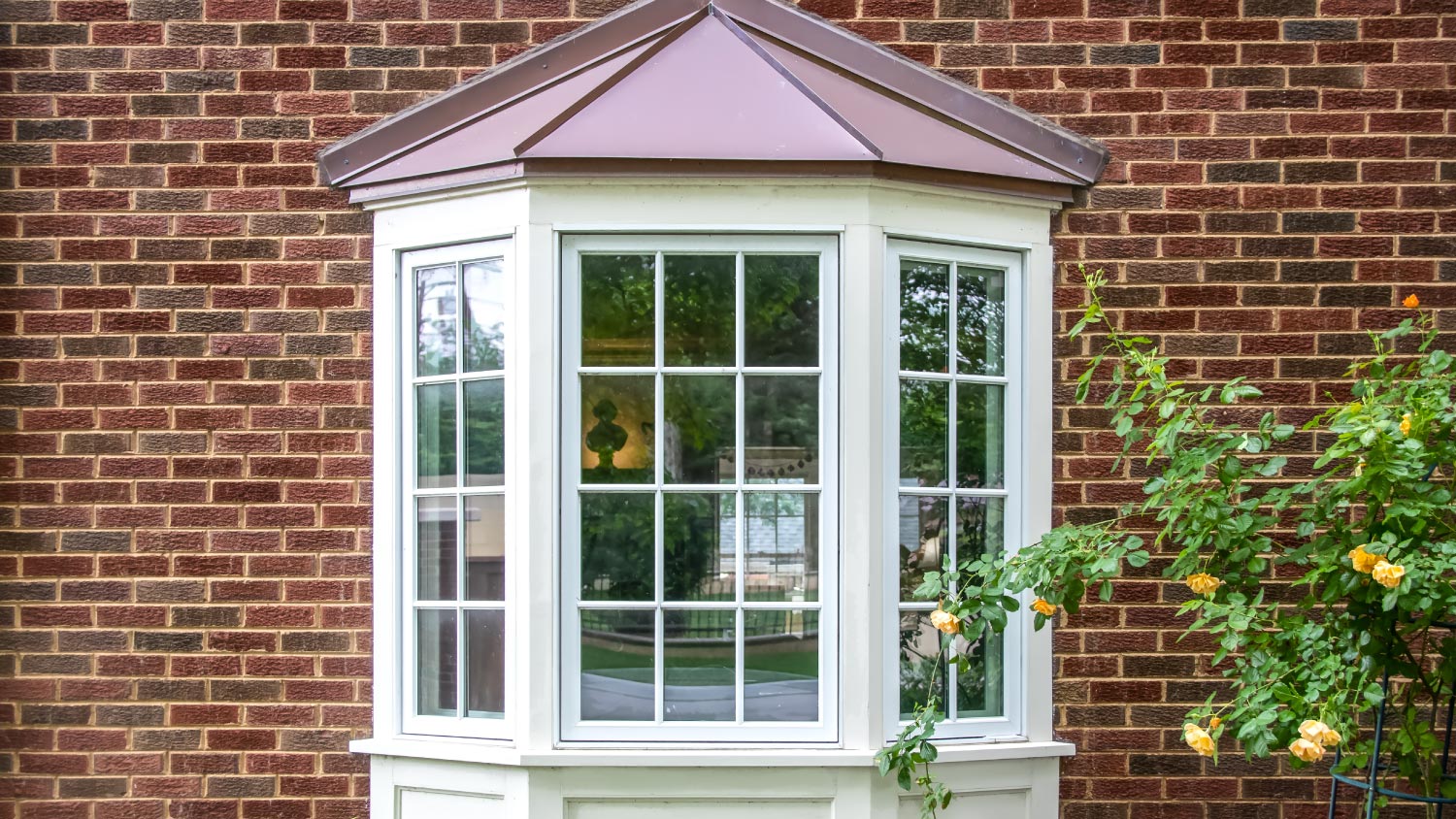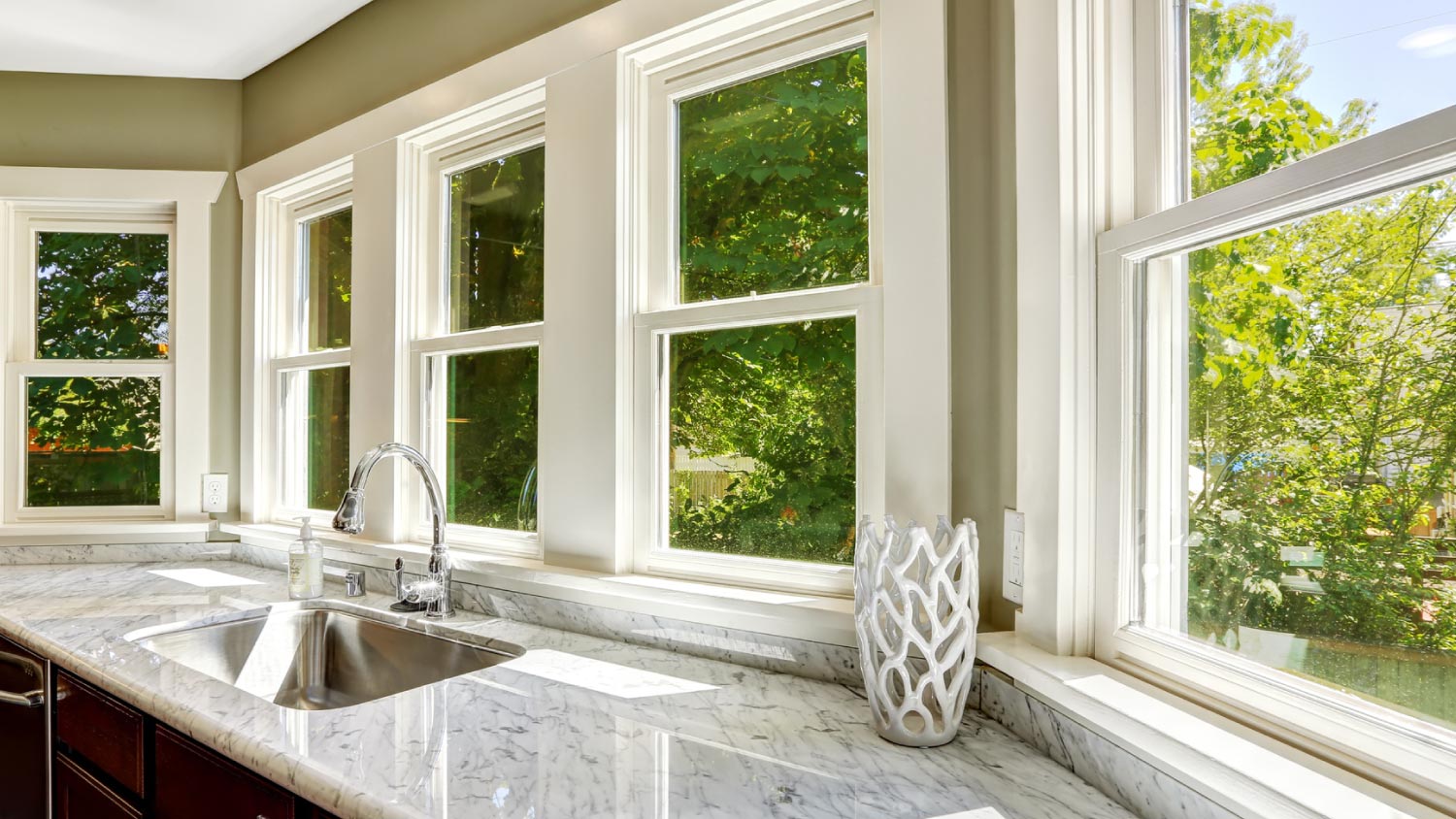How Much Does a Window Replacement Cost?
Typical Range:
$300 - $2,100
Typical Range:
$300 - $2,100
Cost data is based on research by HomeAdvisor.
Updated July 8, 2022
Reviewed by Cati O'Keefe, Expert Home Building & Sustainability Contributor.Replacing windows in your home can range from $300 to $2,100 per window, with an average cost of $850. The most common factors that can increase the final price include the window material, type, and size you choose, along with whether you want a full-frame or retrofit window replacement. We'll discuss costs associated with each of these factors and telltale signs that it's time to replace your window.
| National Average | Low Cost | High Cost |
|---|---|---|
| $850 | $300 | $2,100 |
You'll spend anywhere from $75 to $1,500 for the window alone. There are five main types of window materials with varying costs and energy-efficiency levels, with some being excellent choices for a DIY installation project. The table below goes into detail about each material.
| Window Material | Average Price Range |
|---|---|
| Aluminum | $75 – $400 |
| Vinyl | $100 – $900 |
| Wood | $150 – $1,300 |
| Composite | $300 – $1,200 |
| Fiberglass | $500 – $1,500 |
Aluminum costs around $75 to $400 and is known to be affordable, lightweight, and sturdy. But some homeowners may not like the look of metal on windows. They’re less energy-efficient than vinyl but comparable in price.
They’re the most popular window replacement style on the market because they’re affordable, costing around $100 to $900 and generally 10% to 30% cheaper than wood and fiberglass windows. Vinyl is very durable and typically doesn’t need a lot of repairs. They’re also an easy DIY install option, although some homeowners may think these windows look inexpensive. It’s also worth highlighting that vinyl is less energy-efficient than fiberglass.
Wooden windows cost approximately $150 to $1,300 and are suitable for homeowners who have older or historic homes. However, it’s important to note that wood doesn’t resist moisture, meaning wooden windows can rot or become susceptible to mold. On the plus side, wood windows are more energy-efficient than vinyl ones.
These cost around $300 to $1,200. Some composite windows are made of reclaimed wood fiber and thermoplastic polymer and can resist rot, decay, and fungal growth. If the composite is made from wood, these windows may also be energy efficient. Composite windows are twice as strong as vinyl windows, but keep in mind that this material is more expensive than most other window materials.
They’re the preferred material for windows these days and cost around $500 to $1,500. Fiberglass windows are more expensive than most other window materials, but they’re more energy-efficient than vinyl, offer more color options, and last longer than others.
The price of your windows will also be affected by the type of window you select. You'll make this decision primarily based on aesthetics and the amount of light, ventilation, and access you need. Here are the most common window types for homes:
| Standard Window Type | Average Price Range (Excluding Labor) |
|---|---|
| Single-hung | $100 – $400 |
| Double-hung | $150 – $650 |
| Picture | $65 – $700 |
| Casement | $150 – $1,000 |
| Sliding | $150 – $800 |
| Folding | $500 – $900 |
| Storm | $90 – $400 |
| Bay | $910 – $7,100 |
| Bow | $1,500 – $6,500 |
| Custom | $1,000+ |
Single-hung windows are the most popular style and cost $100 to $400 each. They have a vertical opening with a single lower sash that allows ventilation and remains flush with the wall, so they’re a great option for walls facing a walkway. Single-hung windows can provide a more authentic look in historic homes. Another plus is that DIY installation is a simple project since it has a lighter frame and arrives as a fixed unit.
Double-hung windows cost between $150 and $650 each. While they look like a single-hung window, both the upper and lower sashes move, allowing ventilation from the window's top or bottom. It isn't a good idea to replace these yourself because they're heavier, and the complexity of moving parts means more opportunities for costly mistakes. Double-hung windows also require the highest quality frame.
On the plus side, double-hung windows are easier to clean than single-hung ones. They allow for more ventilation for rooms with lots of moisture and are more secure because of double-locked units. Explore the differences between a single-hung window versus a double-hung window.
Picture-style windows cost anywhere from $65 to $700 or more, depending on the size. They’re a simple square or rectangle shape with a glass pane that doesn’t open, although some have a side panel for ventilation and can make a sunroom brighter or enhance your home’s curb appeal.
Casement windows run from $150 to $1,000. They’re hinged on one side and crank open to allow for ventilation. These types of windows are common above kitchen sinks.
Sliding windows run from $150 to $800 each. They open on a track from side to side and are sometimes referred to as horizontal windows, sliders, or gliders. Some people find these windows easier to open than casement windows.
Folding types, also known as pass-through windows, are custom installations and range anywhere from $500 to $900. They don’t take up as much space as an open door but still open up to offer ventilation and light.
Storm or hurricane windows cost $90 to $400 each and can either be interior or exterior windows. These can help reduce airflow in and out of existing windows and lower energy bills because low-e, or low emissivity, storm windows reflect heat into the house during colder months and help the home stay cooler during the summer.
A bay window costs $910 to $7,100 but can go up if you need to open up a wall for it. It features three panes joined at an angle that extrude from a living space or bedroom. These windows are popular because they let in a large amount of light from various directions. They also increase curb appeal and can be as functional as they’re decorative, with the addition of seating or shelving.
Bow windows cost anywhere from $1,500 to $6,500. They’re like bay styles but have a minimum of five panes rather than three, with glass panels at equal angles that form a semi-circle “bow.”
Bow windows fit well in Victorian-style homes, but they make an elegant architectural touch in most settings. Installing a bow window where one doesn’t already exist can cost significantly more because you’ll need to factor in new framing, drywall, and any extra roofing and siding. You’ll almost always want to hire a local window installer to put this window type in.
Custom work is always more than standard replacements and starts at $1,000 each. Custom sizes and installations are common among older homes where standard opening sizes weren't used.
Even the smallest window will cost more than $100 due to the production cost. Various brands also price their products differently. A higher-end brand might charge $1,200 for a standard window, while a budget-friendly brand might only charge $300. There are hundreds of non-custom sizes available direct from manufacturers, through your pro, and most big box home improvement stores.
Window sizes affect both material costs and installation times. For example, a sizeable bay-style window requires two pros and additional work. Compare that to the labor for a small bathroom window replacement, and it's easy to understand why window sizes affect labor fees. For the best estimate for your specific project, contact a window installer near you.
A retrofit window installation means a contractor will insert a new window sash into the existing window frame. A window sash is the window section that holds the glass in place, moving and holding the glass panes together. On the other hand, a full-frame window replacement means a contractor will replace everything, including the glass panes and frame.
| Full-Frame Window | Retrofit Replacement |
|---|---|
| Labor: $150 – $800 each | Labor: $100 – $300 each |
| Allows for a new window style | Only suitable if your existing window frame is structurally sound |
| Nail fin frame | Slides into an existing hole |
| Requires trim work | No finishing work needed |
A retrofit window replacement is less labor-extensive, less expensive than inserting an entirely new window frame, and preserves the existing trim. However, a retrofit window replacement is only a good choice if the wood or aluminum frames you already have are structurally sound.
A full-frame window replacement allows the installer to inspect and repair water damage. This also offers the homeowner an opportunity to replace a window for a new style. However, expect to pay more for a full-frame window replacement.
Most window installers charge about $40 to $65 per hour. Expect to pay more in metropolitan areas like San Francisco or New York City or if you have a complicated project. For example, replacing one window in a single-story suburban home built in the last 20 years might be a quick two-hour job, but a third-floor replacement in an old row home may take six hours or longer.
The more difficult it is to reach a window, the more costly the job will be as well. Complex installs—as dictated by the age of the home, accessibility, and location—can increase the cost to $600 or more per window. Some other factors that play into labor include:
Travel time
Fuel for work
Vehicle setup
Cleanup and disposal fees
Given the fixed overhead on this type of work, you can save on labor by replacing more windows rather than one window at a time.
There are a few other factors that affect window replacement prices. We go into more detail below.
Replacing windows on older homes can double or triple the final project price. The unique challenges include custom pieces made to fit non-standard sizes, repairing or replacing rotted or broken trim, matching historical architecture, removing counterweights, upgrading to current code standards, and filling empty areas with insulation. It’s a fairly common problem, as about 14% of the nation’s housing is made up of homes more than 70 years old.
A crack running from one side of a window to another might be a pressure crack, meaning there might be a serious problem with your home's structure. Keep in mind, though, that houses naturally settle about 10 years after they're built.
Windows can account for 25% to 30% of your home's heat loss, so replacing them with Energy Star-rated products can help you save on your utility bills. When shopping for energy-efficient windows, you'll have many options to choose from. You'll find that vinyl, wood, and fiberglass are much better insulators than aluminum, but any frame material can include high-efficiency glass and low-emissivity coatings. On average, thermally insulated, energy-efficient windows run about $120 to $1,200 or more.
"When considering cost versus value for energy-efficient windows, remember that the same qualities that make a window efficient also make your home's climate more comfortable,” says Cati O'Keefe, Expert Home Building & Sustainability Contributor. “Good windows prevent cold and hot spots, which may make them worth the additional expense."
Even if you buy energy-efficient windows, they have to be installed appropriately. Trained pros should install your windows according to the manufacturer's instructions. If they fail to do this, your warranty may become void.
Most people don't realize that some window replacements need permits, which can cost between $50 and $300. If you’re planning to replace just the movable parts, sash, or the section that holds the glass in place, you won’t need one. But if you’re altering the structure of your home, such as putting in a larger window, you’ll need to apply for one.
If you're thinking of ignoring the permit requirement, be aware there's no guarantee the new windows are code-compliant, which means they could pose a safety risk. This means that inspectors might notice the difference in your blueprint when you go to sell.
You may want to replace your windows just to refresh and modernize the look of your home. But most often, homeowners look to replace them when they just aren't functioning the way they should. Here are some common reasons why homeowners should consider replacing their windows.
You’ll likely need a window replacement if your energy bills are skyrocketing. Drafts make your air conditioning or heating system work harder. One way to tell if your window needs to be replaced is to take a lighter and hold it near your window. If it flickers, there's a draft coming in.
If you’re having problems opening and closing your windows or they show visible damage or moisture, chances are you’ll need to replace them.
Single- and some double-pane windows can't block sound vibrations from your street. New windows will help with soundproofing, and energy-efficient ones can even absorb soundwaves before entering your home.
A leaky window is hard to miss, but a wooden frame that’s seen too much moisture is more subtle. Hire a window frame repair pro near you before there’s serious decay, which could cause safety issues.
A handy homeowner may be able to replace their own windows, but there are risks to a DIY install—and you're unlikely to save any money. Contractors can purchase materials wholesale, while you’ll most likely have to pay retail price. In addition, there are several other advantages to hiring a professional window installer, such as receiving guidance on the best window material and type for your house, increasing home security, and decreasing utility bills.
Replacement windows are often worth the price. You’ll get approximately 70% return when you sell your home. Depending on how long you live there, the energy savings can make up for the window replacement price.
The cost to replace a windowpane is between $180 and $410, with most repairs averaging $280. Prices will range depending on your window style, glass type, and labor costs. The number of glass panes can also affect the final cost.
Replace windows when they show rot, lose all insulation value, or break. Many homeowners who own older properties upgrade from single-pane to double-pane windows to reduce utility bills. There are other window replacement benefits to consider.
In most cases, window installers install windows from the outside. This is because the exterior wall is usually wider than the interior one, making for an easier installation. But every case is unique, so depending on your window type and the location, be prepared for your pro to come inside your home.
No, you don’t need to remove the trim to replace a window if your trim, siding, and casing are still in good condition. In this case, you can install a pocket window, which lets you install a window without removing both the interior and exterior trims. However, if the existing trim is damaged or rotting, you’ll need to remove and replace your trim.
